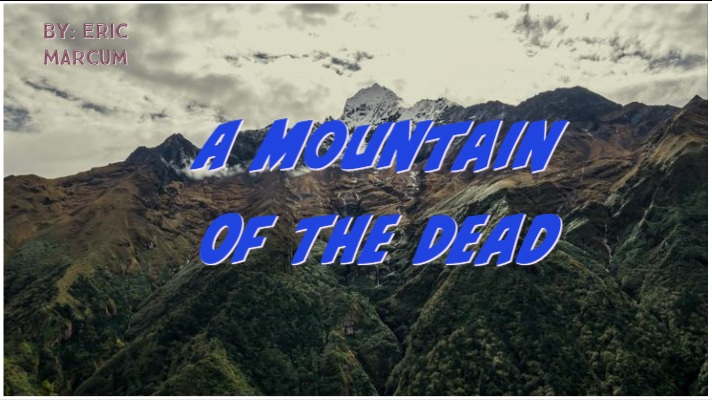-
play_arrow
New 365
-
play_arrow
KTLK-dB RADIO ONLINE 24/7

By Eric Marcum:
Every year approximately 800 people attempt the climb to the peak, and of those that make the attempt roughly 7% succumb to either altitude sickness, weather, or one of the many other obstacles that “The Death Zone” (anything above 26,000 ft. in altitude) has to offer. Exact numbers are a bit hard to come by as there are commercial concerns, “optics” if you will, as well as the fact that there are alternative routes and countries involved, and record keeping is not a priority. One can choose the Nepalese routes, or the Tibetan routes. It is believed at this time that there are roughly 300 climbers that have died upon the shoulders of this formidable stone giant. Some have even served as landmarks. One such climber known
to his family as Tsewang Paljor, a young Indian climber who died in a 1996 blizzard, is known to other climbers as the landmark “Green Boots”, and many have had to step over his frozen legs in their own ascent to the summit.
Though at base camp the temperatures can be as high as 77 ◦ F once you start for the peak the temperature drops steadily. It is never above freezing, and can drop to -66◦ F (not counting wind chill) without warning. Another hazard is the thin air. At sea level atmospheric pressure is around 14 psi (Pounds per square inch). At base camp the average is about 8 psi down to 5 psi at the peak. This drop in pressure causes a nasty illness known as
altitude sickness. As the body tries to compensate for the lower Oxygen
content of the air, one becomes nauseated, and begins to hyperventilate. The rapid breathing in turn causes weakness and exhaustion to set in. The thin air also causes cerebral edema (brain swelling) to occur. So you will find yourself having a difficult time being rational on top of everything else. The body will compensate for the thinner air by producing more hemoglobin to carry oxygen in the blood, but this takes time, a minimum of 40, and up to 90 days (average lifespan of a red blood cell in your circulation.) This
compensation effect is in essence what gives the Sherpa&’ s their edge when guiding parties to the summit. All of this aside, if you are climbing Everest you are trekking through a very active and unpredictable ecosystem given to hurricane force winds, and avalanches just to name a few.
300, that is quite a few corpses to leave strewn about so why are so
many of the dead left on Everest? Well for one thing, it is difficult enough for one person to take themselves to the summit, and still have the endurance to make it back to base camp. Many of the dead, did reach the peak, but then died on the return trip, mostly due to exhaustion, frostbite and oxygen
deprivation. For another rescue by means of aircraft is nearly impossible in that the thin air does not allow most aircraft, including rotary wing craft like helicopters to fly. There has to be some air for the wing to bite into if there is going to be any lift, and in The Death Zone, there simply isn’t enough. Sometimes if the climber died at an elevation where the Sherpa’s can retrieve the body, it is brought down to an area below 21,000 ft. where helicopters can retrieve it. Total cost? It can reach as much as $70,000, and generally requires a team of six to ten Sherpa’s, who until only very recently regarded handling the bodies as a taboo, and distasteful to accomplish. Many of the dead told their families and climbing partners that if they died during the attempt, they wished their bodies to remain on Everest.
Is it an affront to the mountain to attempt the climb? The Tibetan
name for Everest, Chomolungma, means “Goddess Mother of the World” or “Goddess of the Valley.” The Nepalese name, Sagarmatha, translates to “Peak of Heaven.” So in essence if we make this trip we are trampling overwhat the locals consider holy ground. However, they seem willing to withstand this affront due to the amount of money foreigners are willing to spend in order to climb the mountain. Nepal used to forbid it, but apparently word spread from the Tibetan side of the mountain with regards to what a cash cow it was, and travel bans were lifted. But despite all of this modern encroachment of economics into the spiritual lives of the indigenous population, there may yet be more than meets the eye.
Given the spiritual attributes bestowed upon the mountain it is
perhaps no small wonder that many stories have circulated with regards to phantom climbers, and other seemingly unreal companions. There are many accounts that describe a climbing party encountering a member of their group that wasn’t there when they started, and then seemed to vanish without a trace, beyond the collective memories of said party later. Some have even claimed that they were given encouragement, and motivated to push past their limits by someone who upon later recollection didn’t actually exist. So are these truly the spirits of the mountain? Perhaps the revenants of those that died on their own ascents trying to save those that have come after? Or is it more likely the effects of too little oxygen, exhaustion and cerebral edema causing a folklore driven collective hallucination? Perhaps it is a mix of all of these factors. After all, the natives revere this mountain for
a reason don’t they?
Written by: Joe Rupe
Similar posts
Become an Outsider and stay up-to-date with all things fringe
Contact Us
- +1 501 777 5631
- [email protected]
- DMCA Notification
COPYRIGHT FRINGE MEDIA GROUP LLC




